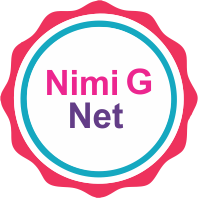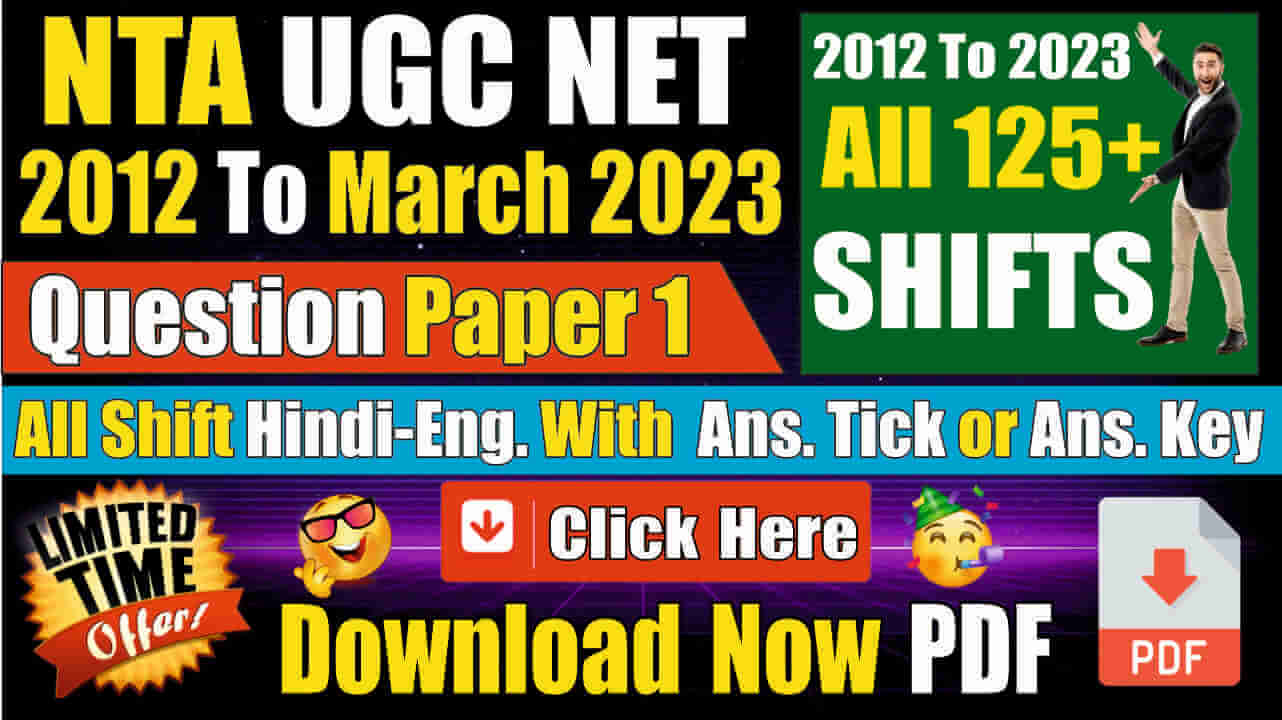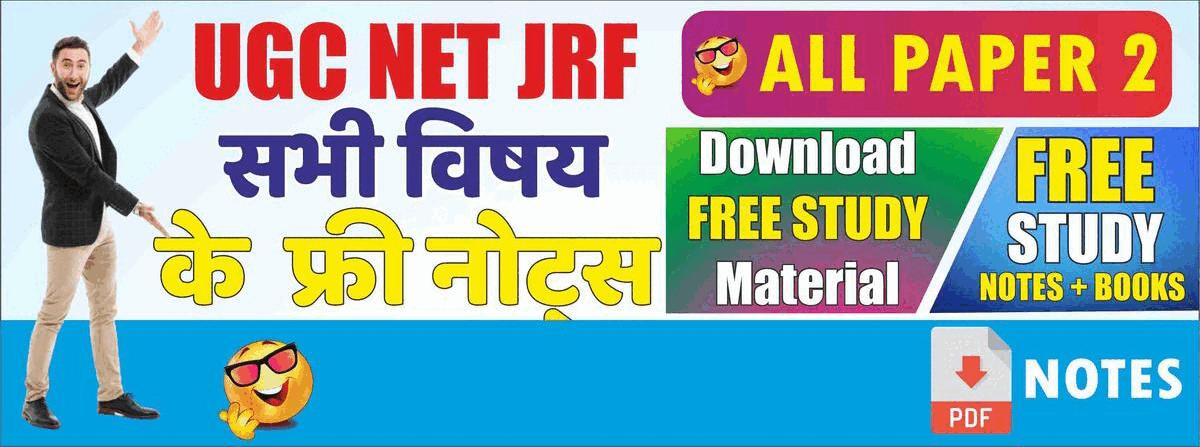Are you searching for the UGC NET Museology Conservation Syllabus 2023 PDF Download? Look no further, as we have compiled all the important details and tips to help you prepare for the exam.
The UGC NET Museology Conservation exam is conducted by the National Testing Agency (NTA) for candidates who wish to pursue a career in the field of Museology Conservation. The exam assesses the candidates’ knowledge in the subject and tests their eligibility for lectureship and research fellowships.
If you are planning to appear for the UGC NET Museology Conservation 2023 exam, it is important to have a thorough understanding of the syllabus and exam pattern. In this article, we have compiled all the important information you need to know about the UGC NET Museology Conservation Syllabus 2023 PDF Download
UGC NET Museology Conservation Exam Pattern 2023:
The UGC NET Museology Conservation exam consists of two papers – Paper 1 and Paper 2. Both papers are conducted on the same day, and the duration of each paper is 3 hours. The exam is conducted online, and each question carries 2 marks. There is no negative marking for incorrect answers.
The UGC NET Museology Conservation Exam consists of two papers: Paper 1 and Paper 2.
Paper 1:
- Duration: 3 hours
- Number of questions: 50
- Total marks: 100
- Type of questions: Multiple Choice Questions (MCQs) based on general aptitude, teaching and research aptitude, and current affairs.
Paper 2:
- Duration: 3 hours
- Number of questions: 100
- Total marks: 200
- Type of questions: MCQs based on Museology Conservation subjects.
Both papers are conducted in a single session with no break in between. The candidates are required to appear for both papers to be considered for the selection process.
It’s important to note that there is no negative marking for incorrect answers in UGC NET Museology Conservation Exam.
UGC NET Museology Conservation Syllabus 2023: Download PDF
The UGC NET Museology Conservation syllabus is divided into two parts – Paper 1 and Paper 2. Here’s a detailed syllabus for both papers.
Paper 1 Syllabus:
Teaching Aptitude:
- Teaching: Nature, objectives, characteristics, and basic requirements.
- Learner’s characteristics: Characteristics of adolescent and adult learners, and individual differences.
- Methods of teaching: Teacher-centered vs. learner-centered methods; Off-line vs. online methods.
- Evaluation systems: Elements and types of evaluation, evaluation in higher education, and grading system.
Research Aptitude:
- Research: Meaning, types, and characteristics.
- Steps of research.
- Methods of research.
- Research Ethics.
Reading Comprehension:
- Comprehension passages.
Communication:
- Communication: Nature, characteristics, types, barriers, and effective communication.
- Verbal and non-verbal communication.
- Classroom communication.
Logical Reasoning:
- Understanding the structure of arguments.
- Evaluating and distinguishing deductive and inductive reasoning.
- Verbal analogies.
Data Interpretation:
- Sources, acquisition, and interpretation of data.
- Quantitative and qualitative data.
- Graphical representation and mapping of data.
Paper 2 Syllabus:
Nta Ugc Net Museology Conservation Syllabus 2023 in English
Unit I: Introduction to Museum and Museology
Definitions and concepts of museum, ecomuseum, community museum, virtual museum, neighborhood museum, etc.
Definitions and concept of museology, new museology, meta museology, museography, etc.
Early collections, ancient and medieval prototypes of museums. History, growth and development of museums in Indian and global context.
Classification and types of museums.
Functions and role of museums.
Role of national and international professional organizations – Museums Association (U.K.), Museums Association of India, UNESCO, ICOM, ICCROM, Commonwealth Association of Museums, American Alliance of Museums, IASC, IIC, IUCN, UNESCO-ICOM Museum Information Center, etc.
ICOM code of ethics.
Unit II: Collection Management
Purposes of collecting. Scope of collections – tangible and intangible.
Ethics of collecting. Collection management policy including acquisitions,disposal, loaning, insurance, etc.
Methods of collecting tangible and intangible heritage.
Methods of authenticating museum objects.
Collection holding areas for tangible and intangible collections – accessibility, retrieval, storage systems and preventive conservation measures.
Collection security. Guidelines for handling, packing and transporting collections.
Unit III: Documentation and Research of Tangible and Intangible Collections
Purposes of documenting museum collections
Ethics of documentation.
Documentation policy and procedures.
Types of documents – entry, accession, classified, and movement registers; index and catalogue cards. Digital documentation.
Numbering the objects – numbering systems, procedure of applying numbers on objects. Barcoding.
Documentation standards – format of various types of documents. Use of standard terminology. Concept of Object ID.
Objectives and scope of collection research. Models of collection research.
Unit IV: Museum Exhibitions
Museum exhibition as a communication system. Models of communication in the context of exhibitions.
Exhibition policy.
Ethics of exhibitions.
Types of exhibitions on the basis of duration, location, arrangement of objects/ specimen and purpose.
Components of exhibitions – objects/ specimen, communication media, text, exhibition furniture and accessories. Spatial and other relationships between exhibit components.
Exhibition text – Types of labels, assessing reading and comprehensibility of text, typography, designing and preparation of labels.
Exhibition lighting – Basic considerations while using light, types of light sources, different types of lamps, recent trends: fibre optics, track lighting, computer controlled lighting.
Planning and designing exhibitions – stages of planning; exhibition brief; using principles of design, ergonomics, colour, texture and light in exhibitions. Orientation. Circulation of visitors. Signage. Use of multi-media.
Designing exhibition furniture, dioramas, and historical settings.
Evaluation – front-end analysis, formative and summative evaluation.
Unit V: Museum Education, Interpretation and Publications
Role and potential of museums in informal, non-formal and formal education/ learning.
Museums and life long learning. Barriers to learning in museums. Education versus interpretation.
Ethics of museum education.
Museum education policy. Theories of learning. Characteristics of learning in museums.
Various learning activities such as guides tours, lectures, talks, storytelling, workbooks, workshops, demonstrations, drama, role play, live interpretation, digital methods, etc. for different target groups.
Making learning opportunities accessible to persons with disabilities.
Museum extension services – travelling and mobile exhibitions, school loan kits, community programmes, excursions, field trips, heritage walks, etc. Extension through digital media.
Museum publication – purpose and types.
Feedback – purposes and methods
Unit VI: Conservation of Collections — Part I
Definitions of conservation – preventive, remedial and restoration. Terminology used in conservation.
Nature and properties of material of collections – organic, inorganic and composite. Susceptibility of materials to different agents of decay.
Ethics of conservation.
Conservation policy. Conservation audit.
Causes and types of deterioration – environmental: effects of light, humidity, temperature and pollution; biological: fungi, insects, rodents and birds; human – carelessness, mishandling and wrong treatment; disasters: fire, flood, earthquake, arson, etc.
Preventive conservation: significance and effectiveness, and implementation in storage, exhibitions and transit through –
Environmental control – monitoring of light and UV radiations, R.H., Temperature and pollutants and application of control measures. Tools and equipments used in monitoring and control.
Integrated Pest Management – identification, control and termination of pests. Various fungicides, insecticides and rodenticides used in IPM. Good practices of Housekeeping and Rules of handling museum objects. Tools, materials and equipments used in housekeeping and handling.
Unit VII: Conservation of Collections — Part II
Methodology of remedial conservation – techniques of examination, diagnosis of type and extent of decay, documentation and testing of probable treatments, treatment of objects using suitable materials and method. Recommendations for preventive care.
Materials, equipment, tools and techniques used in remedial conservation of following materials –
i. Paper and archival materials ii. Paintings on different substrate such as wall, canvas, paper, wood, textiles,
palmleaf etc. iii. Textiles and costumes iv. wood, skin material, bone, horn and ivory v. metallic objects made of iron, copper, bronze and silver vi. stone objects vi. ceramic and glass vii. Biological specimens
Health and safety issues.
Unit VIII: Museum Management
Concept of Management : Foundations and evolution. Essential components of management : decision making and leadership.
Functions of management: Planning: Types of plans – Vision and mission statements, objectives, policies,
Procedures, rules, strategies, action plans, and contingency plans. Planning process, MBO, Strategic planning, Use of Critical Path method and Simple Bar method in planning. Organization Design – staff structures, job descriptions, authority and
responsibilities. Staffing – Framing recruitment rules, methods of recruitment, training and
development of human resource. Performance appraisal. Controlling — process and methods of control. Financing — sources of fund generation, Budget and budgeting
Project Management.
Prevention of harassment in work place.
Museum security – Risk assessment and management. Manual, physical and electronic security. Security procedures. Fire safety.
Disaster management – preparation, prevention, response and recovery.
Unit IX: Museum Marketing and Public Relations
Meaning and purpose of marketing and its role in museums. Marketing terminology.
Concept and types of products. Product Life cycle and marketing strategies at different stages. Museum as a multiproduct organization and a service.
Segmentation and target marketing – significance, bases and approaches.
Marketing Mix – Product, Price, Promotion and Place: significance, tools and strategies.
Marketing Research – purpose, types and methods.
Marketing versus Public Relations. Definitions and significance of Public Relations. Foundational Principles of Public relations.
Tools, tactics and strategies of Public Relations. Media relations. Public relations campaigns.
Unit X: Legislation and Conventions Related to Museums and Heritage
The Indian Treasure Trove Act, 1878
The Ancient Monuments and Archaeological Sites and Remains Act, 1958
The Antiquities and Art Treasures Act, 1972
The Wild Life Protection Act, 1972
Persons with disabilities (Equal Opportunities, Protection of Rights and Full Participation) Act, 1995
Right to information Act, 2005
UNESCO World Heritage Convention, 1972
Convention on International Trade in Endangered species of Wild Flora and Fauna (CITES), 1973
The Venice Charter, 1964
The UNESCO Convention for the Safeguarding of the Intangible Cultural Heritage, 2003
Paper 2 Syllabus Download Pdf:
Ugc Net Museology Conservation Syllabus 2023 in English
Ugc Net Museology Conservation Syllabus 2023 in Hindi
Preparation Tips for UGC NET Museology Conservation Exam 2023:
Here are some tips for preparing for the UGC NET Museology Conservation exam 2023:
- Understand the syllabus and exam pattern thoroughly.
- Make a study plan
- Refer to standard textbooks and study materials recommended for the exam.
- Practice previous year question papers and mock tests.
- Focus on time management and accuracy while attempting the questions.
- Take regular breaks and maintain a healthy lifestyle to avoid burnout.
- Join coaching classes or online courses if necessary.
- Stay updated with current affairs related to the Museology Conservation field.
Important Points:
- The UGC NET Museology Conservation exam is conducted by NTA for candidates who wish to pursue a career in Museology Conservation.
- The exam assesses the candidates’ knowledge in the subject and tests their eligibility for lectureship and research fellowships.
- The exam pattern of UGC NET Museology Conservation 2023 includes multiple-choice questions and is conducted in online mode.
- The marking scheme of the exam is +2 for a correct answer and no negative marking for incorrect answers.
- The duration of the exam is 3 hours, and the number of questions is 150.
- The UGC NET Museology Conservation Syllabus 2023 PDF Download is an important document that provides a detailed outline of the topics that will be covered in the exam.
- To download the syllabus, candidates can visit the official website of NTA and click on the link provided.
- The syllabus is available in PDF format and can be downloaded for free.
- The syllabus is divided into nine units, each covering a specific topic related to Museology Conservation.
- To prepare for the exam, candidates must understand the syllabus, make a study plan, practice previous year question papers, join a coaching institute, take mock tests, and revise regularly.
FAQs:
- Is there any negative marking in the UGC NET Museology Conservation exam 2023? Ans: No, there is no negative marking for incorrect answers.
- Can I download the UGC NET Museology Conservation Syllabus 2023 PDF from the official website? Ans: Yes, the syllabus is available for download on the official website of NTA.
- What is the duration of the UGC NET Museology Conservation exam 2023? Ans: The duration of each paper is 3 hours.
Also Check:
Conclusion:
In conclusion, the UGC NET Museology Conservation exam 2023 is a crucial opportunity for aspirants who want to pursue a career in the teaching or research field. To crack the exam, it’s essential to have a clear understanding of the syllabus, exam pattern, and prepare accordingly. With a comprehensive understanding of the UGC NET Museology Conservation Syllabus 2023 PDF download and proper preparation, you can clear the exam with flying colors.





